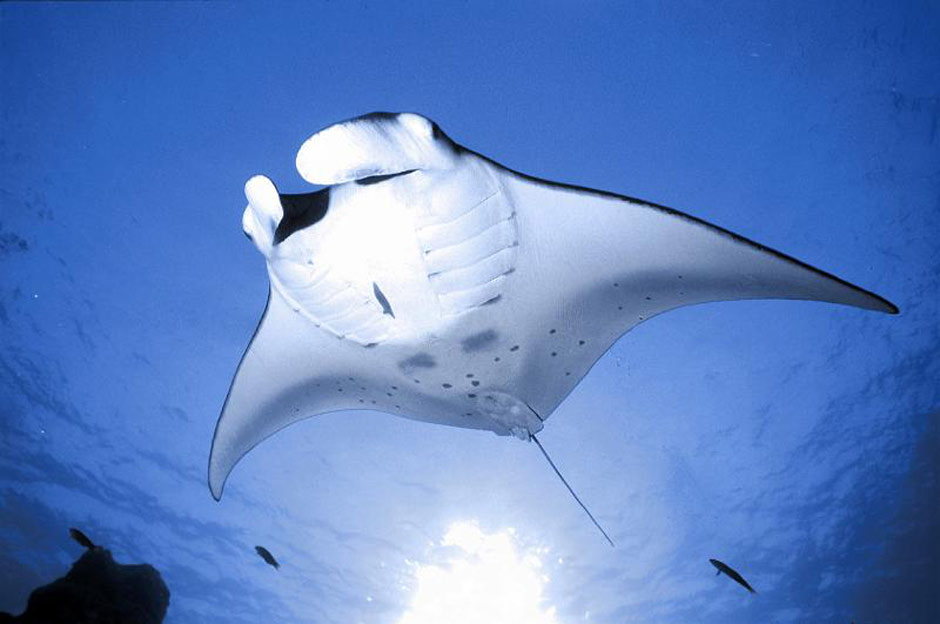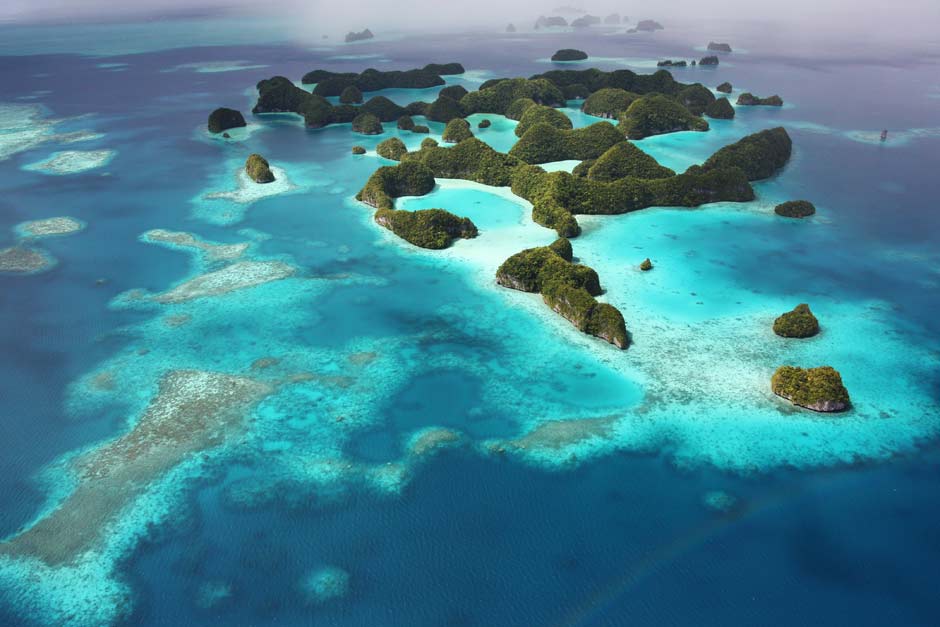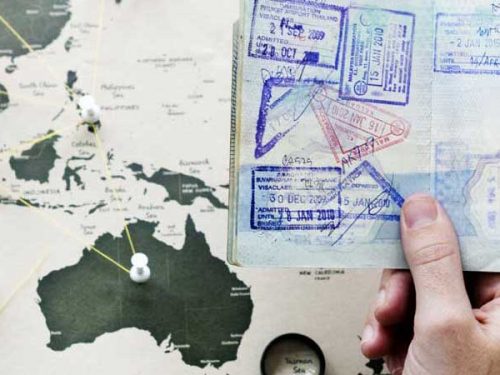 If you’ve yet to hang transfixed beneath the waves while a school of manta rays spins gracefully about you, you’ve yet to truly scuba dive. Diving with manta rays is one of the most sought-after experiences for divers of all levels, chiefly because these gentle creatures are so impressive in size and appearance, but also because of their tendency to travel in groups as large as fifty members strong.
If you’ve yet to hang transfixed beneath the waves while a school of manta rays spins gracefully about you, you’ve yet to truly scuba dive. Diving with manta rays is one of the most sought-after experiences for divers of all levels, chiefly because these gentle creatures are so impressive in size and appearance, but also because of their tendency to travel in groups as large as fifty members strong.
Fish That Can Fly
The word manta means cloak or wrap in Spanish, and with their majestically winged appearance, manta rays are aptly named. The two manta ray species – the larger oceanic mantas and the smaller reef mantas – may vary in size from 3-7 meters (9-23 feet) across, but when they glide effortlessly toward you out of the abyss, you’re sure to find one no less striking than the other. Put any concerns about their magnificent wingspan aside, however; these unusually shaped fish are primarily plankton eaters, and what may look like horns and gaping mouths to us are actually part of a highly advanced food filtration system.
One of the main reasons that diving with manta rays is such a delightful experience is the fact that, as fish, these gilled giants have to move continuously in order to “breathe”. With never a moment to rest, ocean divers around the globe are frequently treated to underwater ballets where dozens of manta rays swirl in unison as they feed.
Cleanest Creatures in the Sea
Although we still don’t know a lot about the secret lives of mantas, we do know where to find them – just about anywhere that boasts some open ocean. Because they’re more migratory in nature, divers can encounter oceanic mantas whether waters are tropical, sub-tropical, or temperate, but they’re typically found along coastlines dotted with island groupings, and punctuated by offshore pinnacles and seamounts. Reef mantas, on the other hand, prefer more tropical climes where they’re usually found cruising along coral reefs, atolls, and bays.
Despite their geographic preferences, both pelagic species share one common health and lifestyle habit that can make diving with manta rays unusually memorable: their fascination with cleaning stations. Manta rays frequently visit reef-based cleaning sites, where specialized cleaner fish like wrasses quickly and efficiently divest them of any parasites, dead skin, or bacteria.
Because they return to the same cleaning sites again and again, and often spend as long as two hours at a time swimming in lazy circles above their favourite reef, cleaning stations offer a reliable and enchanted opportunity to encounter large numbers of manta rays interacting naturally with their environment.
Think Micronesia for Manta Rays
If diving with manta rays is at the top of your travel itinerary, the very first destination you should consider is the island of Yap in Micronesia. Well known for its frequent manta encounters, this lush, tropical island just north of the equator is surrounded by a shallow, turquoise lagoon and close to 150 km (90 miles) of barrier reef. Manta rays live in the region year-round, but are especially abundant during the mating season from December through April.
Even the most experienced scuba diver will be mesmerized by sites like Manta Ray Bay and Valley of the Rays, where breathtaking encounters are literally guaranteed. As the only dedicated dive resort in Yap, Manta Ray Bay Resort puts these ocean-dwelling beauties right at your fingertips, making it easy for you to revel in the magic of mantas.







